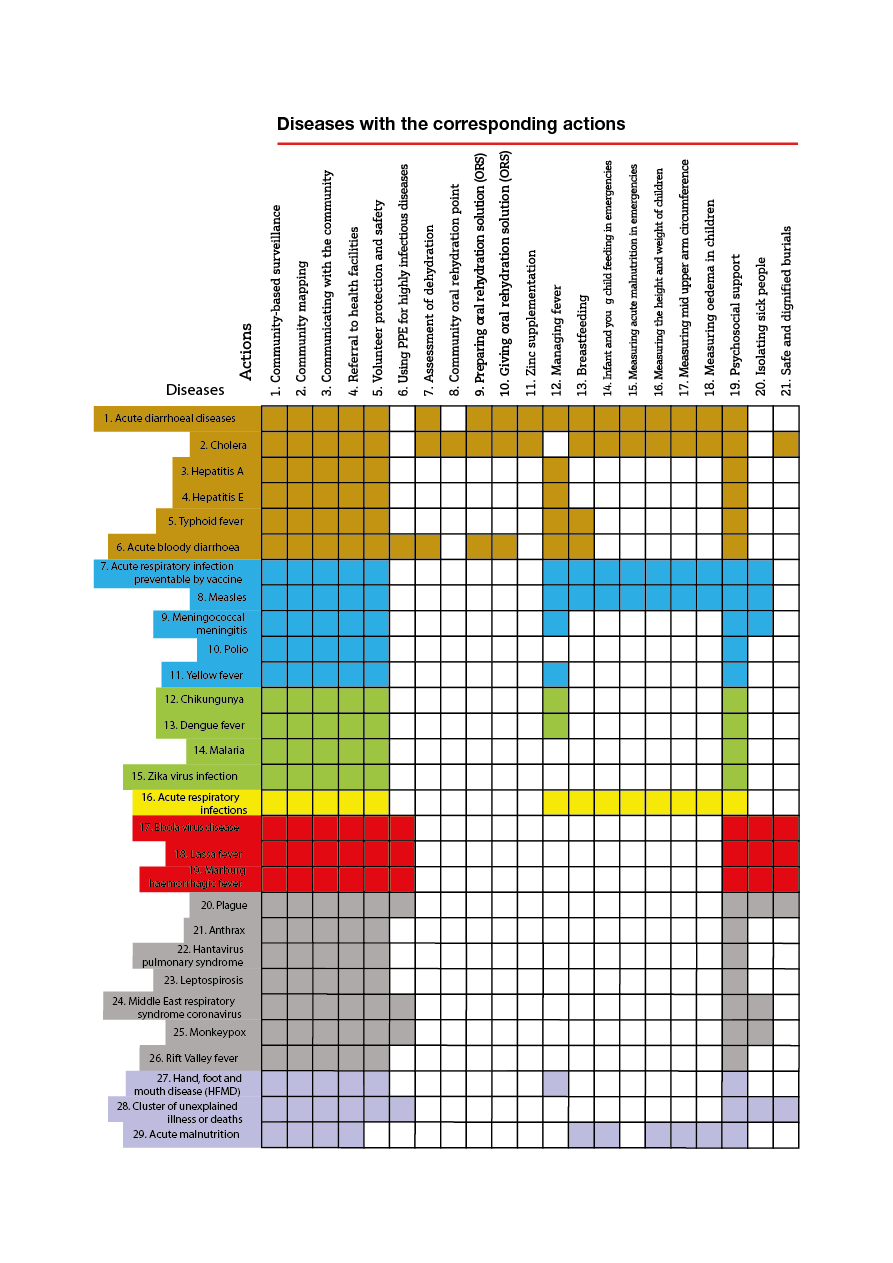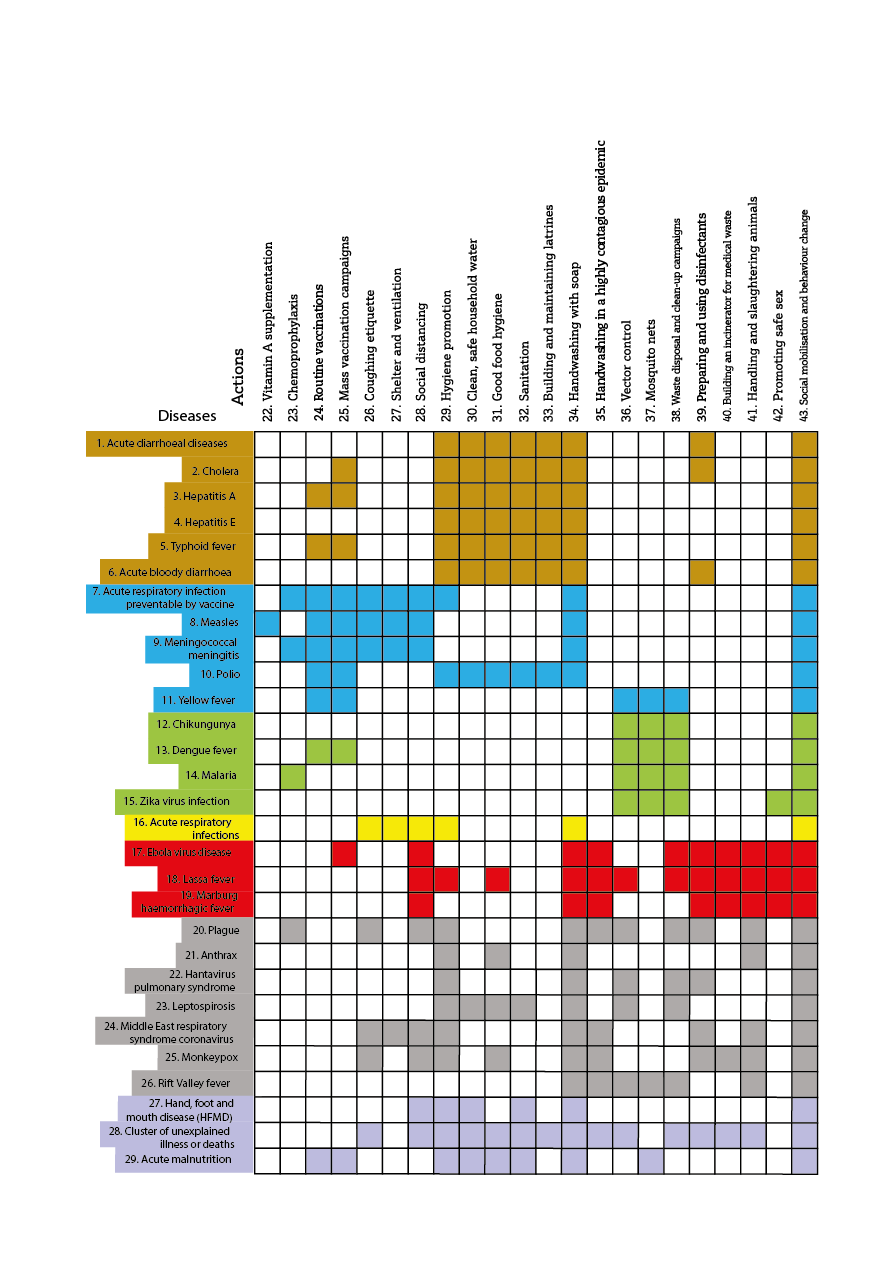Session 4.3. Action tools
By the end of this session, you will be able to:
- Discuss the action tools.
- Know how to use the action tools.
Part 4.3.1. What are the action tools?
Each action tool describes one specific action that needs to be taken to help control an epidemic of a certain disease. Some of these actions are specific to one kind of disease, while others will be relevant to several forms of epidemic or all epidemics. One of the reasons we have separated the tools is that this enables you to use the action tools for whatever disease you are dealing with. The action tools are numbered so that you can find them easily.
To determine what actions need to be taken in a specific epidemic, look at the numbers on each disease tool.
An example of an action tool: 25. Mass vaccination campaigns
Part 4.3.2. List of action tools
1. Community-based surveillance.
2. Community mapping.
3. Communicating with the community.
4. Referral to health facilities.
5. Volunteer protection and safety.
6. Personal protection equipment (PPE) for highly infectious diseases.
7. Assessment of dehydration.
8. Community oral rehydration point.
9. Preparing oral rehydration salt (ORS) solution.
10. Giving oral rehydration salt (ORS) solution.
11. Zinc supplementation.
12. Managing fever.
13. Breastfeeding.
14. Infant and young child feeding in emergencies.
15. Measuring acute malnutrition in emergencies.
16. Measuring the height and weight of children.
17. Measuring mid upper arm circumference (MUAC).
18. Measuring oedema (water retention) in children.
19. Psychosocial support.
20. Isolating sick people.
21. Safe and dignified burials.
22. Vitamin A supplementation.
23. Chemoprophylaxis.
24. Routine vaccinations.
25. Mass vaccination campaigns.
26. Coughing etiquette.
27. Shelter and ventilation.
28. Social distancing.
29. Hygiene promotion.
30. Clean, safe household water.
31. Good food hygiene.
32. Sanitation.
33. Building and maintaining latrines.
34. Handwashing with soap.
35. Handwashing in a highly contagious epidemic.
36. Vector control.
37. Mosquito nets.
38. Waste disposal and clean-up campaigns.
39. Preparing and using disinfectants.
40. Building an incinerator for medical waste.
41. Handling and slaughtering animals.
42. Promoting safe sex.
43. Social mobilization and behaviour change.

